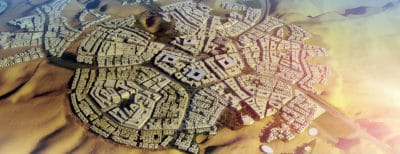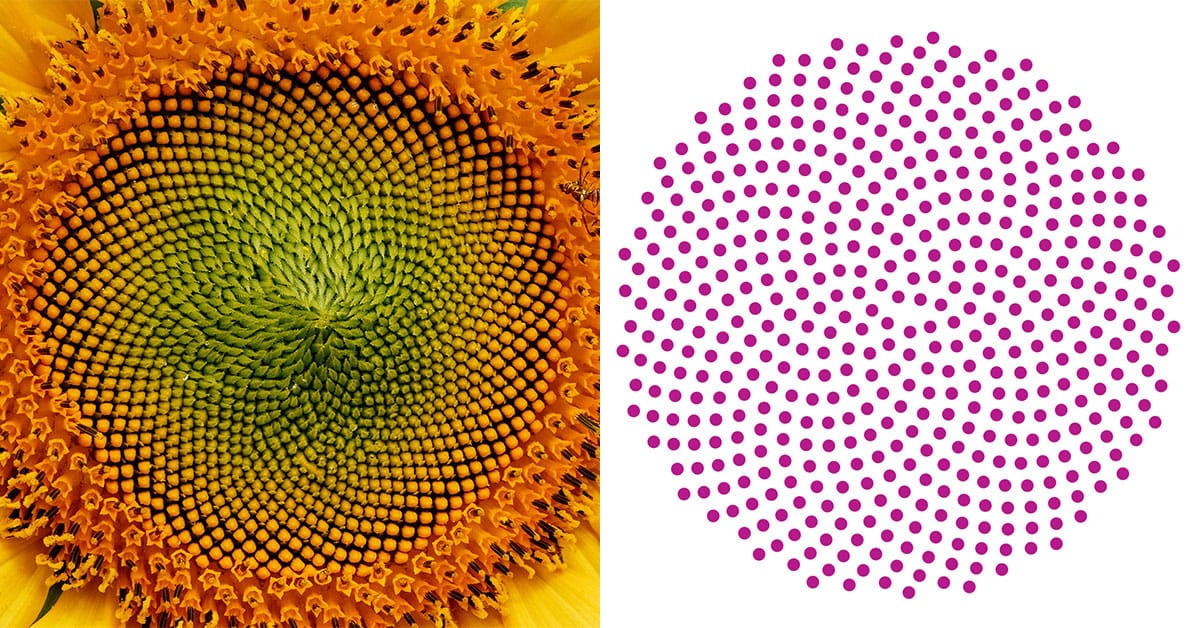 Mathematical patterns and sequences in nature offer a clue to self-organizing systems. The head of a sunflower grows florets in spirals of 35 and 55, approximating the Fibonacci number sequence.
Mathematical patterns and sequences in nature offer a clue to self-organizing systems. The head of a sunflower grows florets in spirals of 35 and 55, approximating the Fibonacci number sequence.
This post is part of a series on the planning and design of eco-cities of the future, particularly in the Gulf region, incorporating case studies and contemporary research.
By Hugh Kidman, Chief Design Architect
Following our earlier post on organic urbanism, here we focus on organic structures and their potentially pragmatic influence on structural and physical solutions. We explore these natural paradigms through four typologies:
- Cellular structures
- Plants
- Sea creatures and insects
- Water, rocks and minerals
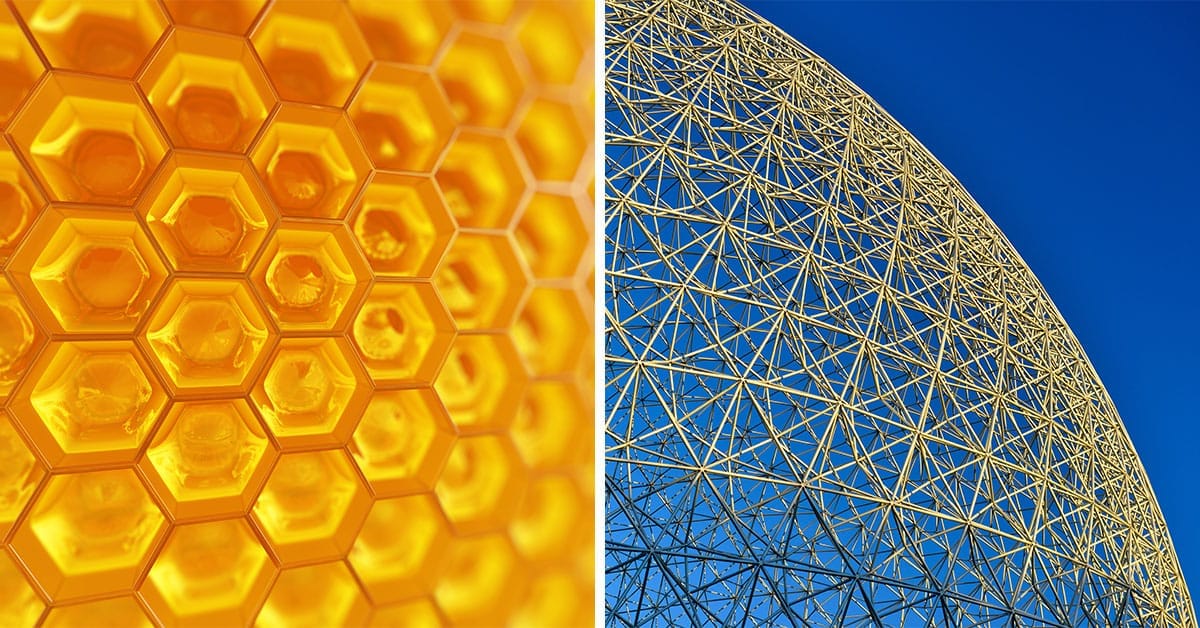
The hexagonal wax cells of honeycombs create a strong and efficient structure. The geodesic domes pioneered by R. Buckminster Fuller, extrapolated from three-dimensional triangular or hexagonal units, exhibit similarly efficiency and strength.
Among the many cellular structures found in nature, honeycombs rank as a perennial source of wonder. Their repeating hexagonal units, constructed by bees as nests for their larvae and deposits of honey and pollen, accrue to form a tessellated pattern with no gaps in between. The scales of fish and reptiles exemplify two more interesting types of cellular formation. Notably, these scales allow for underlying growth and movement, combining rigid unit strength with flexibility of the system or ensemble.

More fleeting and delicate cellular structures occur in the spontaneous accretions of foam and soap bubbles.
At a biological level, cells are the building blocks of all organisms — the basic units of life. Single-cell organisms such as bacteria are adapted to survive in many conditions, while more complex, multicellular organisms evolved metabolic systems to carry energy, chemicals, and electrical signals among all interconnected groups of cells. Notably, cell walls are selectively permeable, allowing desirable substances to enter and exit while blocking the others.

Trees and forests are comparable not only to architectural elements, but also with urban systems in their adaptation to climate, soil conditions and sunlight. Network effects emerge from the actions of individual agents across a larger system.
Plants are an ancient source of inspiration in architecture, with columns often compared to trees. The architect Louis Sullivan even compared the verticality of skyscrapers to a biological growth. In terms of urban form, the hierarchical branching structures of tree branches and roots suggest the orderly distribution of nutrients and a flexible growth principle. The form of a tree is not completely predetermined, but it does follow a set of predictable parameters. A well-planned city should do the same.
Flowers and seeds — reproductive elements that unite form and function as they attract pollinators with their endlessly varied shapes and colors — translate into architecture as both ornamental and functional elements. From a functional point of view, for example, flower petals can be interpreted as architectural canopies, creating ideal shade structures with structural integrity and aesthetic grace.
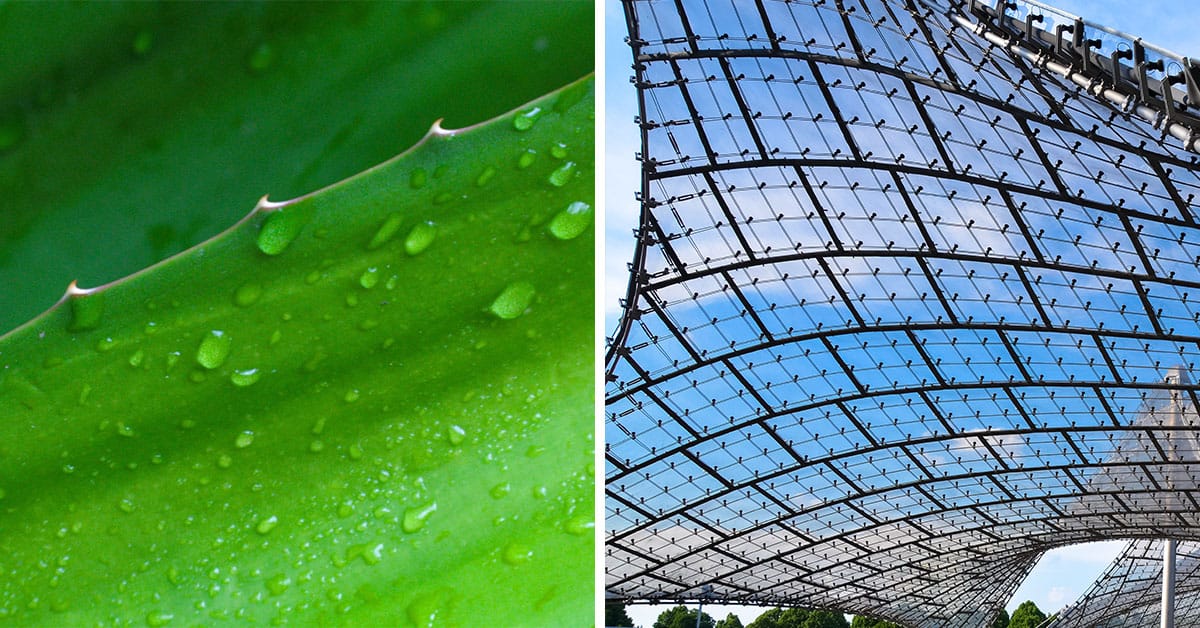
Leaves have evolved protective features to reduce water loss and repel insects even as they perform their photosynthetic functions. Left, the robust leaf of an agave plant after a rain. Right, the lightweight membrane roof structure of the Munich Olympic Stadium engineered by Frei Otto.
Leaves also offer potential metaphors for architectural functions. Not only do they convert sunlight and carbon dioxide into food energy, but also they have evolved protective features such as water repellency (the lotus effect), thorns, wax surfaces to reduce water loss, and various shapes to reduce wind resistance. The waxy surface on a leaf is called a cuticle, which protects the leaf against insects, bacteria and other pests.
These protective characteristics of leaf structures resonate with architecture and engineering, particularly with respect to roof design, insulation, and weatherproof coatings. But whereas leaves typically renew themselves seasonally, architectural structures are usually required to last for many years, requiring additional considerations for durability.
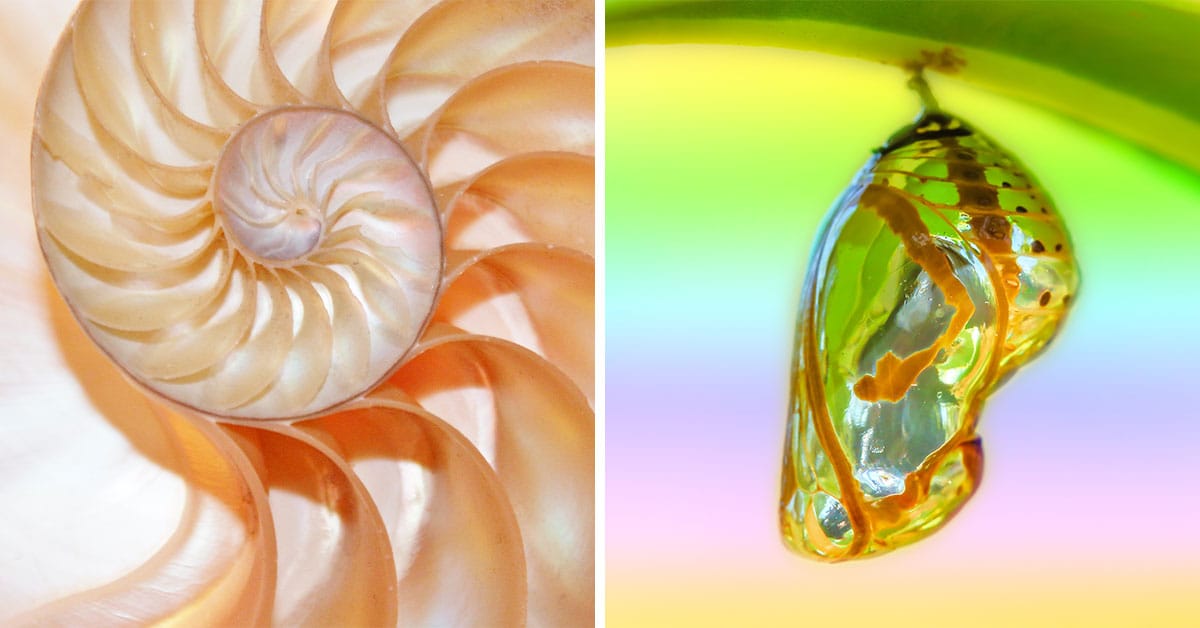
Marine organisms and insects produce intricate structures as well. For example, scallops and clams grow shells with corrugated ridges, providing a distinctive structural form. The shell of the nautilus — a type of nacre shell, or mother of pearl — is particularly interesting due to its resemblance to a logarithmic spiral.
Temporary protective outer coatings are formed by some insects, such as butterflies and moths, as they metamorphose from the larval stage to the chrysalis or pupae stage. During this transitional period, the chrysalis forms a protective outer shield, sometimes protected further by a cocoon, nest, or shell, depending on the species. Although the chrysalis shell might appear vulnerable and defenseless to the human eye, in fact it has a hard ridged profile, giving it architectural qualities.
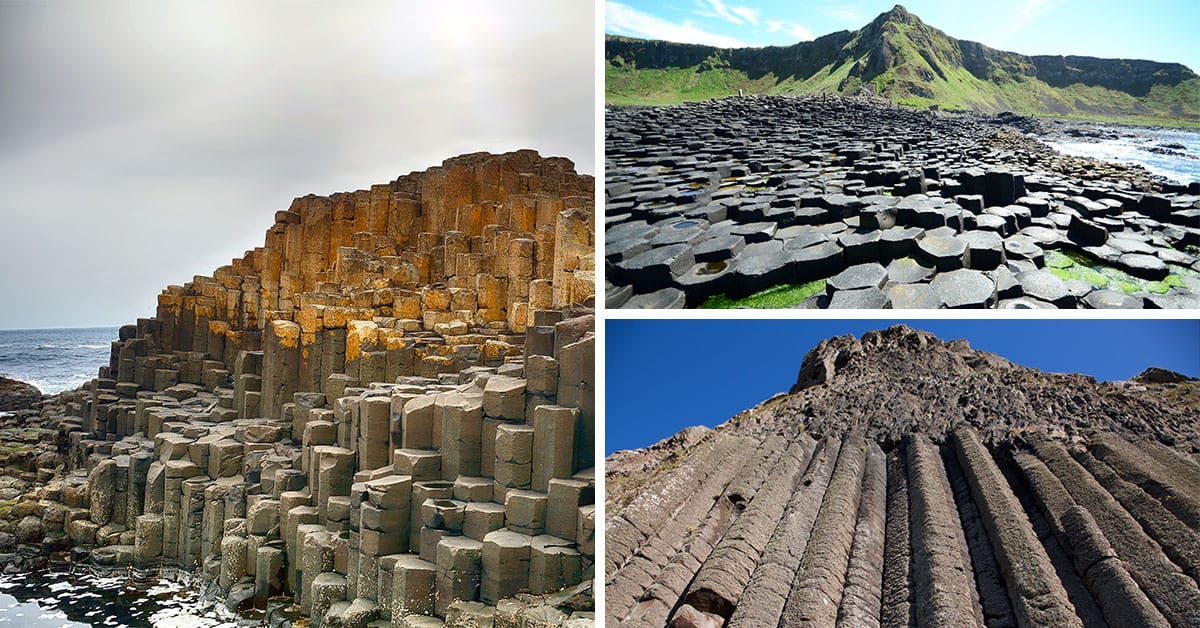
The monumental hexagonal structures of Giant’s Causeway in Northern Ireland were created from molten basalt 50 to 60 million years ago.
Finally, organic structures abound in the composition of water, rocks, and minerals. As just one example, snowflake crystals are formed by the freezing of tiny drops of moisture in clouds. This process results in a variety of shapes, sizes, and geometric patterns. Clouds themselves exhibit the structural properties of water at a larger scale, with numerous different types and permutations.
Rocks and minerals produce some nature’s most amazing — and durable — patterns and shapes. Formed by heat, pressure, and sedimentation, rocks are the physical record of geological and tectonic processes. Large-scale basalt formations display a striking hexagonal structure, while at the molecular level diamonds are composed of a structurally efficient lattice of carbon atoms.
In conclusion, nature is full of organic structures that offer potential inspiration for architects, engineers, and planners. Our ability to visualize and understand these structures is only increasing with new technology and scientific research. From cellular structure to plants, marine and insect shells, or rocks and minerals, the natural world provides countless examples of sophisticated structural forms.
Omrania, a renowned architecture firm, has established a reputation for excellence in blending aesthetic and functional design, setting a benchmark for architecture firms in Riyadh, Saudi Arabia.






